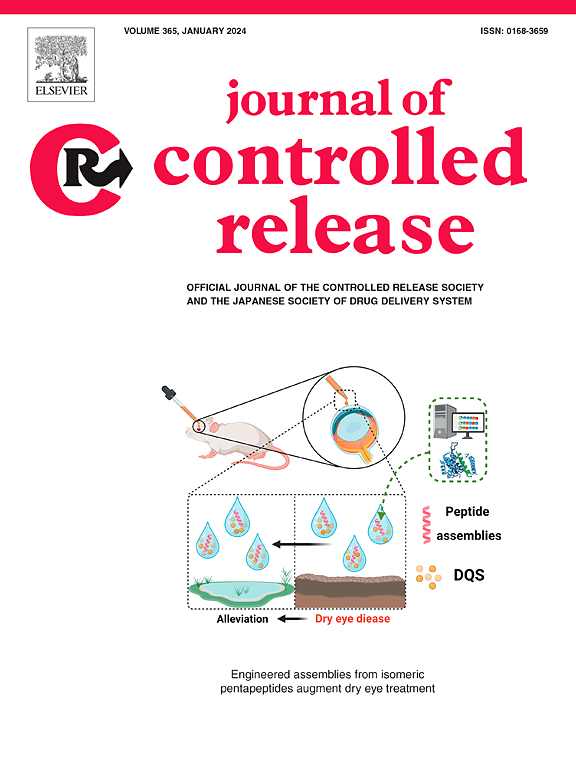Conditional sequential delivery of ginkgetin and rapamycin orchestrates inflammation and autophagy to alleviate intervertebral disc degeneration
IF 10.5
1区 医学
Q1 CHEMISTRY, MULTIDISCIPLINARY
引用次数: 0
Abstract
Intervertebral disc degeneration (IVDD) is a multifaceted and complex condition primarily driven by excessive inflammation, degradation of the extracellular matrix (ECM), and dysfunction of nucleus pulposus cells (NPCs). Despite extensive exploration of various therapeutic agents targeting IVDD, their efficacy remains disappointingly limited. This study underscores the efficacy of ginkgetin (GK), a natural bioflavonoid with potent anti-inflammatory properties, in mitigating inflammation as well as ECM degradation and NPC dysfunction triggered by interleukin-1β (IL-1β). However, GK alone cannot fully address the persistent obstruction in autophagic flux induced by IL-1β. To overcome this limitation, an innovative MMP13-responsive nanoplatform was developed, orchestrating the sequential delivery of GK and rapamycin (RA), targeting distinct phases of IVDD progression. In this design, GK is progressively released from exosomes during the initial phase, while RA is released from mesoporous silica nanoparticles during the mid-phase to enhance autophagic flux. This staged release approach leverages the strengths of both agents, addressing inflammation and restoring autophagy more effectively. In vivo experiments confirmed the substantial therapeutic benefits of this staggered delivery strategy in IVDD. The engineered MMP13-responsive nanoplatform represents a significant advancement in controlled, sequential drug delivery systems, offering a promising therapeutic avenue to effectively regulate inflammation and autophagy, thereby ameliorating IVDD.

求助全文
约1分钟内获得全文
求助全文
来源期刊

Journal of Controlled Release
医学-化学综合
CiteScore
18.50
自引率
5.60%
发文量
700
审稿时长
39 days
期刊介绍:
The Journal of Controlled Release (JCR) proudly serves as the Official Journal of the Controlled Release Society and the Japan Society of Drug Delivery System.
Dedicated to the broad field of delivery science and technology, JCR publishes high-quality research articles covering drug delivery systems and all facets of formulations. This includes the physicochemical and biological properties of drugs, design and characterization of dosage forms, release mechanisms, in vivo testing, and formulation research and development across pharmaceutical, diagnostic, agricultural, environmental, cosmetic, and food industries.
Priority is given to manuscripts that contribute to the fundamental understanding of principles or demonstrate the advantages of novel technologies in terms of safety and efficacy over current clinical standards. JCR strives to be a leading platform for advancements in delivery science and technology.
 求助内容:
求助内容: 应助结果提醒方式:
应助结果提醒方式:


